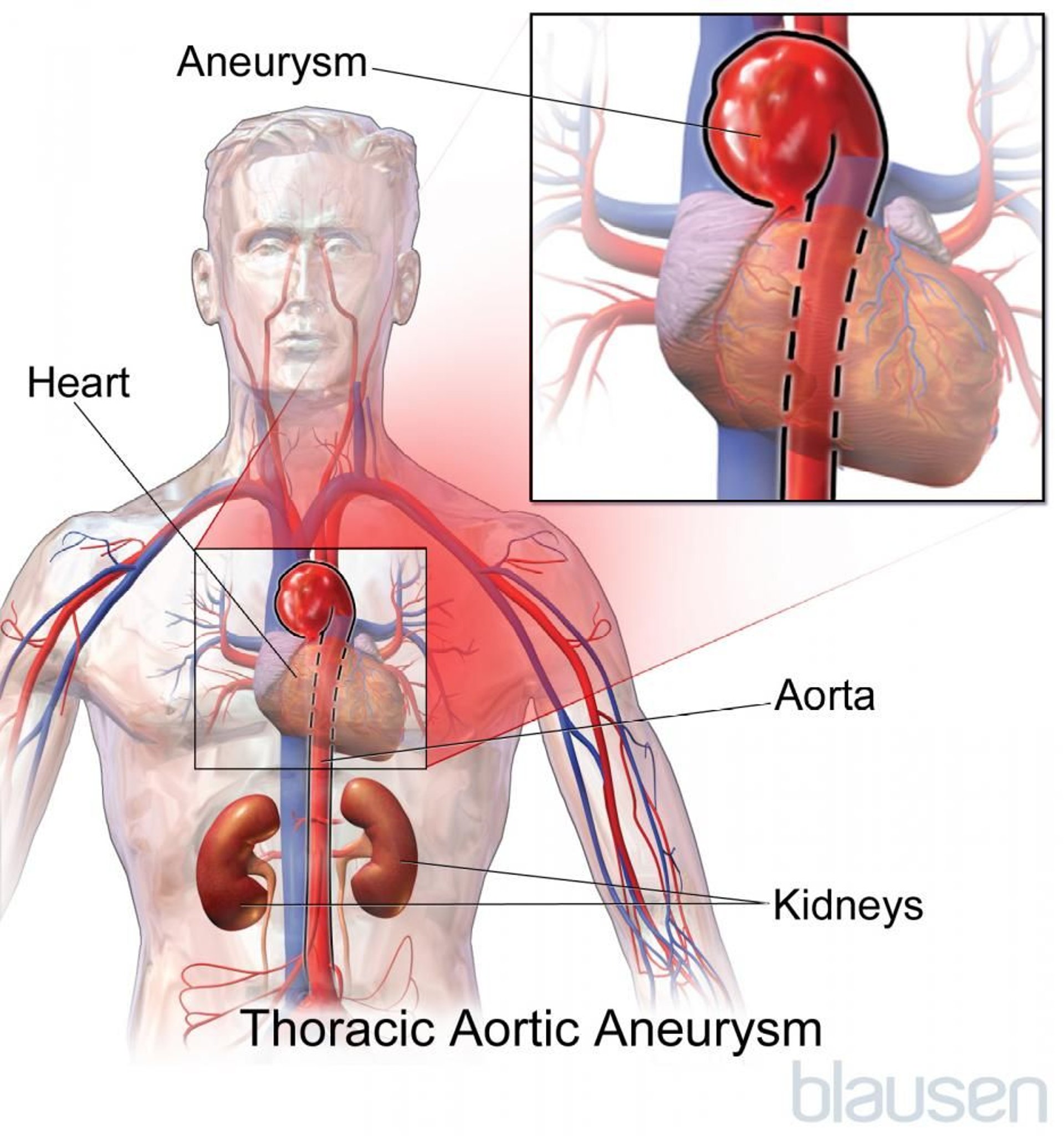Topic Resources
What is a thoracic aortic aneurysm?
Thoracic has to do with the chest (thorax). The aorta is the main blood vessel (artery) that carries blood away from your heart to the rest of your body. An aneurysm is a bulge due to a weakness in an artery wall. A thoracic aortic aneurysm is a bulge in the part of your aorta that passes through your chest.
Thoracic aortic aneurysms may cause pain, coughing, and wheezing
If the aneurysm bursts, blood flows out and you have terrible pain and low blood pressure
A burst thoracic aortic aneurysm is fatal without emergency surgery
Doctors often find an aneurysm by accident when they do an imaging test (such as an x-ray or CT scan) for another problem
Doctors try to fix aneurysms with surgery before the aneurysm bursts
What causes thoracic aortic aneurysms?
Causes of thoracic aortic aneurysms may include:
Marfan syndrome, a disorder that runs in families and damages your body's tissues
Certain infections, such as syphilis, pneumonia, or a urinary tract infection (UTI)
Chest injuries, often from a car crash
What are the symptoms of a thoracic aortic aneurysm?
You may not have symptoms, even if your aneurysm is very big.
Sometimes, the aneurysm presses on nearby organs, nerves, or muscles and causes symptoms, such as:
Pain high in your back
Coughing
Coughing up blood
Problems swallowing
A hoarse voice
Unusual pulsing in your chest
If your aneurysm bursts, symptoms include:
Terrible pain high in your back
Pain in your belly area, chest, and arms
A sudden, dangerous drop in your blood pressure (shock)
Internal bleeding
You'll die if your aneurysm bursts and you don't get emergency treatment.
How can doctors tell if I have a thoracic aortic aneurysm?
Doctors ask about your symptoms or may see signs of an aneurysm during a physical exam, such as:
A heart murmur (a whooshing sound your blood makes as it moves out of the heart into the aneurysm)
An X-ray taken for another reason may show an aneurysm.
Doctors will do imaging tests to see how big and where exactly the aneurysm is, such as:
Transesophageal ultrasound—done by passing an ultrasound probe down your throat into your esophagus (the tube that connects your throat to your stomach)
How do doctors treat a thoracic aortic aneurysm?
If your aneurysm is small, doctors may have you:
Avoid smoking
Take blood pressure medicine
Doctors will check on the size of your aneurysm every 6 to 12 months with a CT scan.
If you have a larger aneurysm, you'll need surgery.
Surgery
Doctors may do surgery to insert a tube (graft) into your aorta to repair the aneurysm. Two types of surgery are possible. Doctors may cut open your chest to insert the graft. Or they may be able to put the graft in your aorta by going through an artery in your upper leg. Which surgery you have depends on your age, health, and where your aneurysm is in your aorta.
If your aneurysm bursts or is about to burst, emergency surgery to fix it may save your life. Without surgery, a thoracic aortic aneurysm is fatal.


